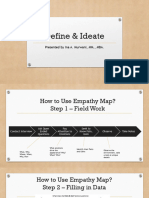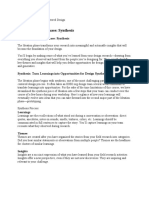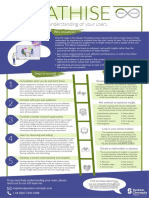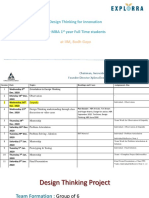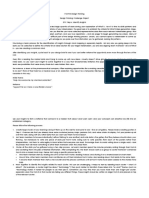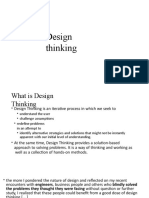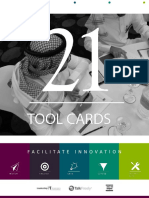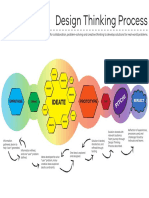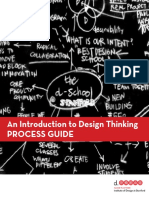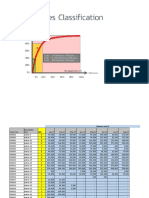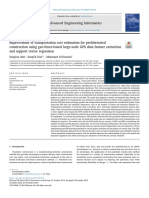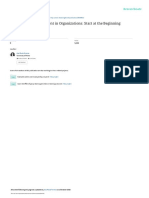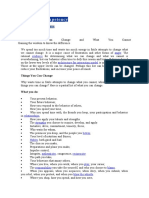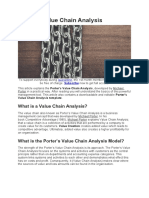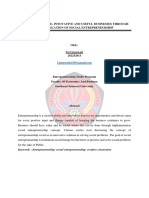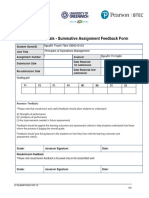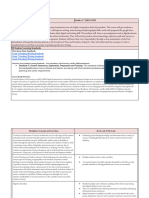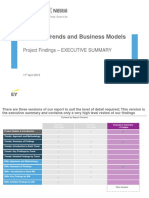0% found this document useful (0 votes)
145 views6 pagesHow To Create POV Statement
This document provides guidance on creating a point of view (POV) statement through design thinking. It outlines a 3-step process: 1) Identify users, needs, and insights from research; 2) Create a chart to structure the POV; 3) Form the POV statement by combining the user, need, and insight. Additional tips are provided, such as using empathy maps and synthesis methods to gain customer insights before ideating solutions. The next part will cover the ideation stage of developing solutions.
Uploaded by
Debasish DeyCopyright
© © All Rights Reserved
We take content rights seriously. If you suspect this is your content, claim it here.
Available Formats
Download as DOCX, PDF, TXT or read online on Scribd
0% found this document useful (0 votes)
145 views6 pagesHow To Create POV Statement
This document provides guidance on creating a point of view (POV) statement through design thinking. It outlines a 3-step process: 1) Identify users, needs, and insights from research; 2) Create a chart to structure the POV; 3) Form the POV statement by combining the user, need, and insight. Additional tips are provided, such as using empathy maps and synthesis methods to gain customer insights before ideating solutions. The next part will cover the ideation stage of developing solutions.
Uploaded by
Debasish DeyCopyright
© © All Rights Reserved
We take content rights seriously. If you suspect this is your content, claim it here.
Available Formats
Download as DOCX, PDF, TXT or read online on Scribd
/ 6
